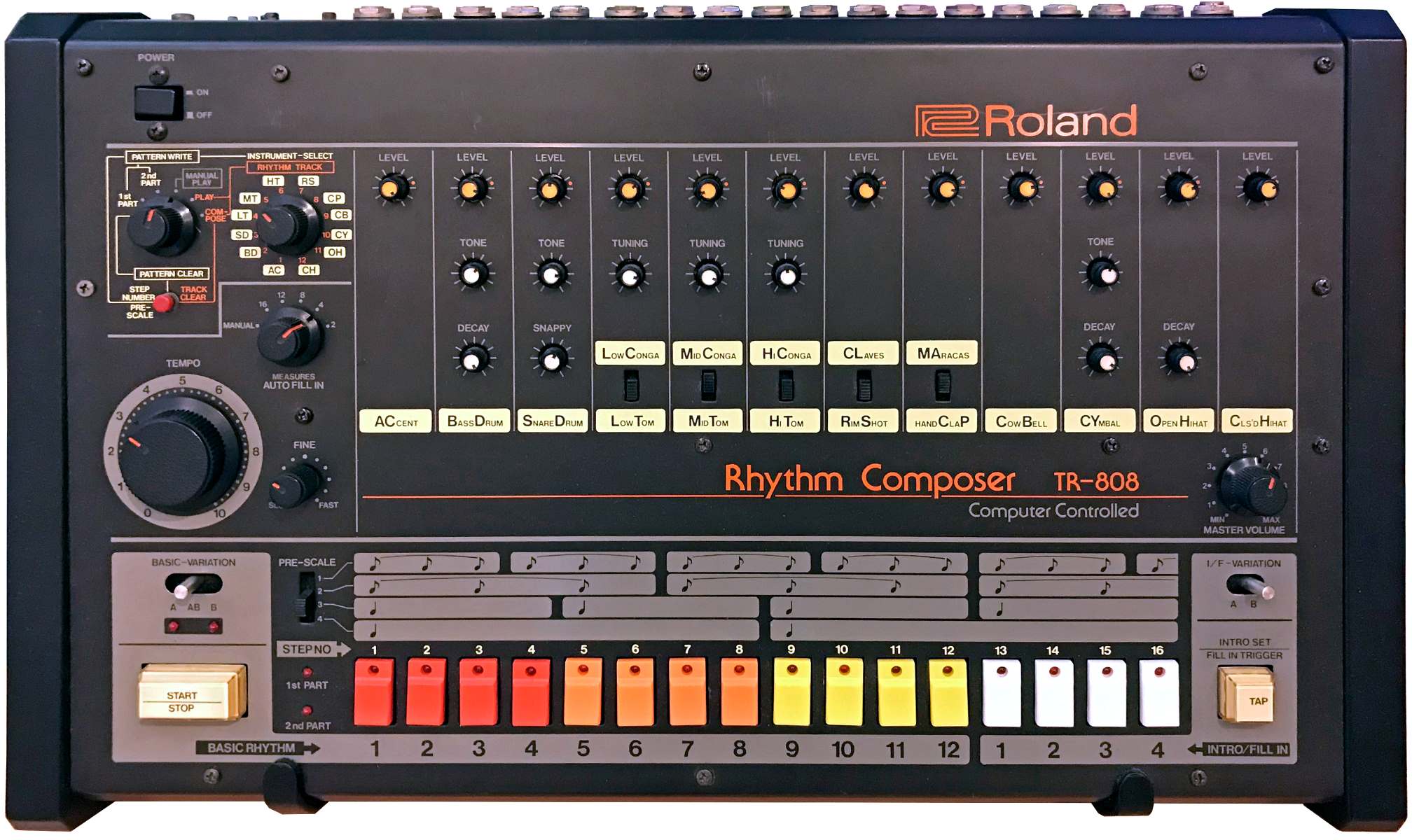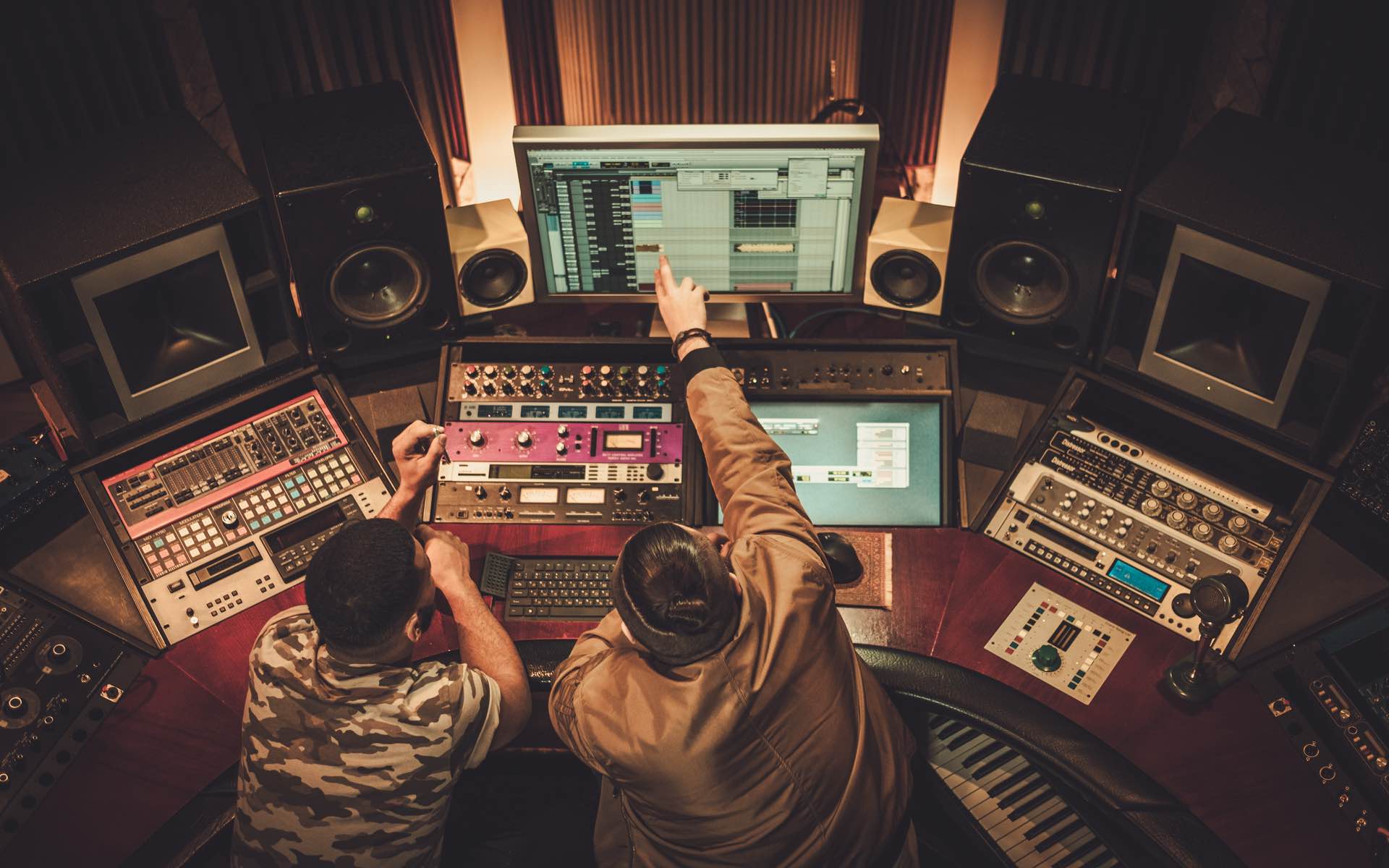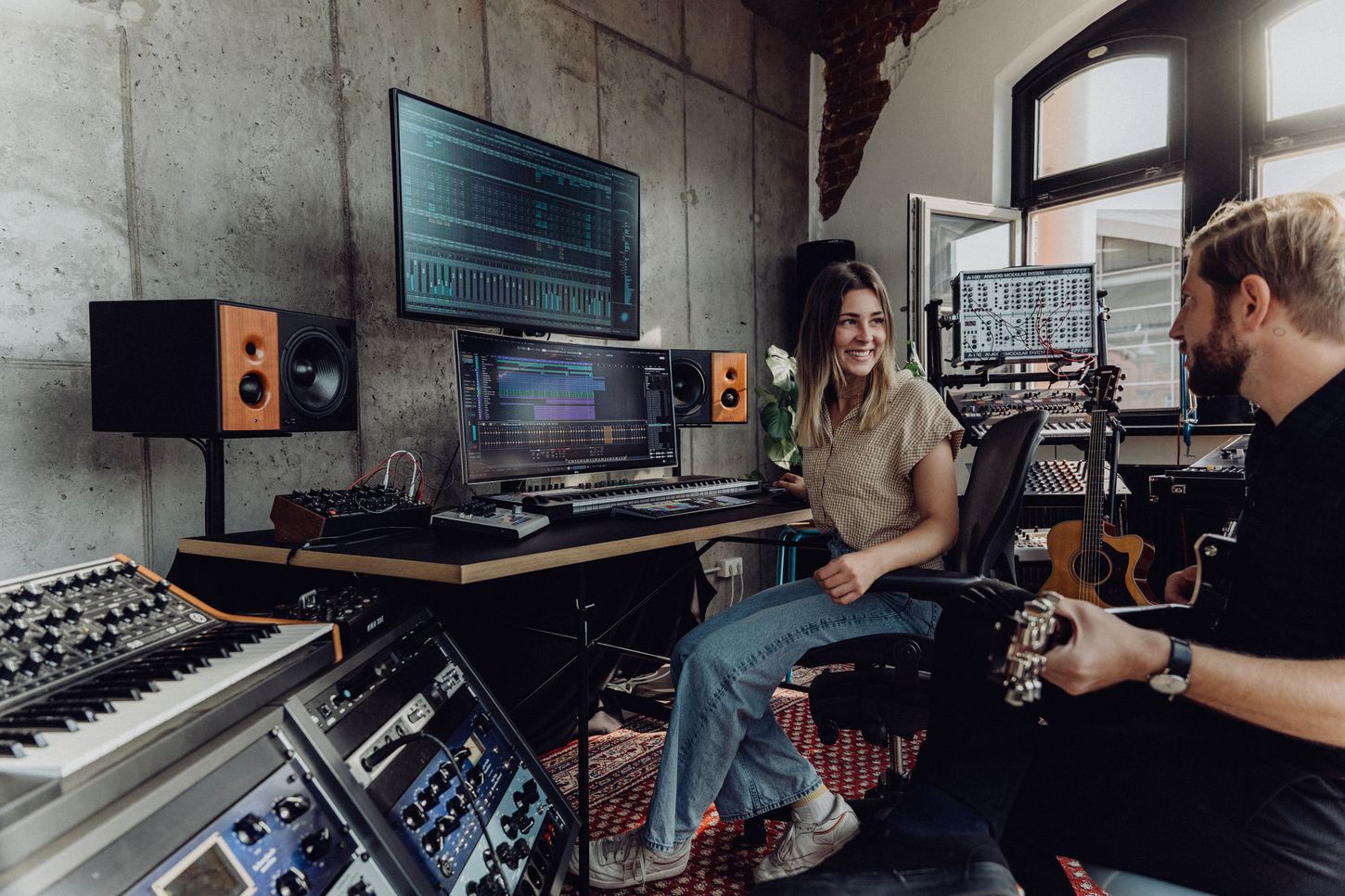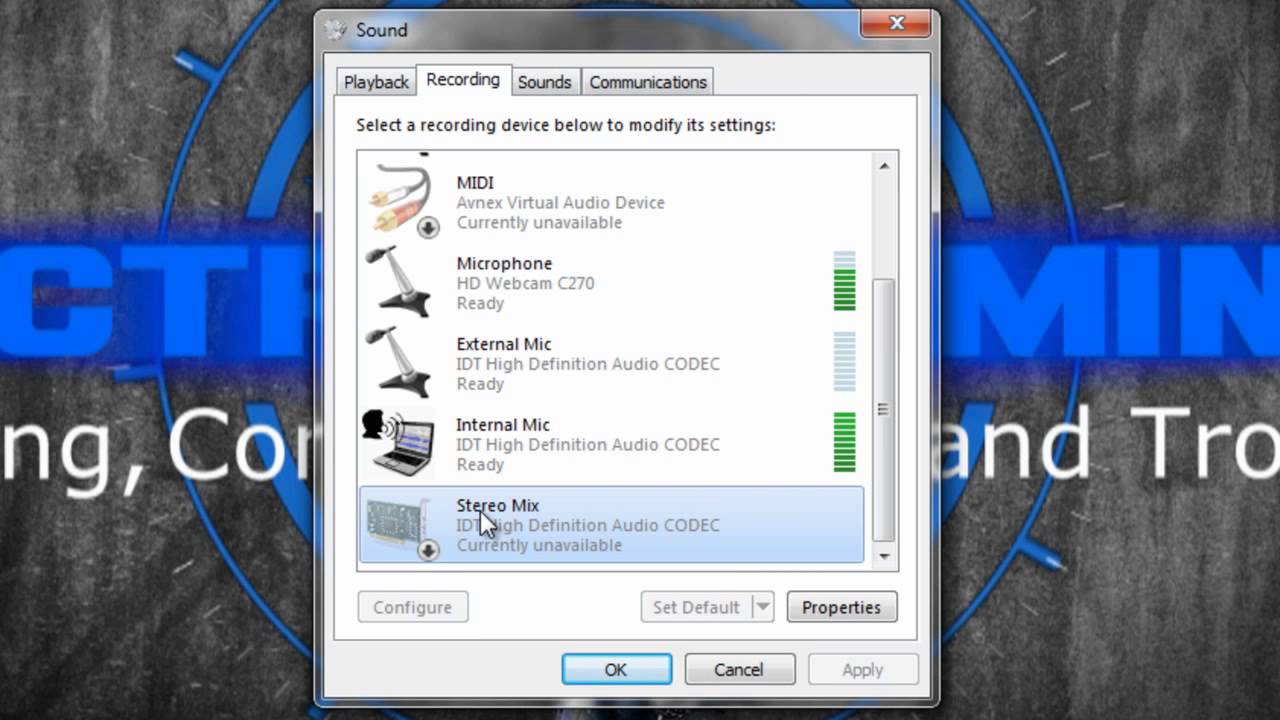Home>Instruments>Bass>How To Mix Bass


Bass
How To Mix Bass
Modified: January 22, 2024
Learn how to mix bass like a pro with our comprehensive guide. Discover the best techniques and tools to enhance the low end of your tracks.
(Many of the links in this article redirect to a specific reviewed product. Your purchase of these products through affiliate links helps to generate commission for AudioLover.com, at no extra cost. Learn more)
Table of Contents
- Introduction
- Understanding Bass Mixing
- Setting Up Your Mix Environment
- Selecting the Right Bass Sounds
- EQ’ing the Bass
- Controlling the Dynamics of the Bass
- Adding Effects to Enhance the Bass
- Stereo Imaging and Panning for Bass
- Creating a Solid Bass Foundation
- Balancing the Bass with the Rest of the Mix
- Monitoring and Adjusting the Bass Levels
- Finalizing Your Bass Mix
- Conclusion
Introduction
Welcome to the world of bass mixing! When it comes to producing music, the bass is the foundation that holds everything together. It provides depth, groove, and a powerful low-end that can truly transform a song.
However, mixing the bass can be a challenging task. Achieving a well-balanced and full-bodied bass sound requires careful attention to detail and a good understanding of the role of the bass in a mix.
In this article, we will delve into the world of bass mixing and explore various techniques and strategies that will help you create a powerful and professional bass sound. Whether you are a seasoned producer or just starting out, these tips and tricks will surely take your bass mixing skills to the next level.
But before we dive deep into the technical aspects, it is essential to emphasize the importance of a good mix environment. A properly treated and acoustically balanced room can make a significant difference in how accurately you perceive the bass frequencies.
With that said, let’s explore the world of bass mixing and learn how to create a solid and impactful bass sound that will shake the foundations of your music!
Understanding Bass Mixing
Before we start mixing the bass, it’s important to have a solid understanding of how the bass fits into the overall mix. The role of the bass is to provide the low-frequency foundation and add depth and impact to the music.
One common mistake many novice producers make is to mix the bass too loud. While it’s natural to want the bass to be powerful and present, it’s crucial to strike a balance with the other elements in the mix. The bass should complement the drums and other instruments rather than overpowering them.
Another aspect to consider is the tonal quality of the bass. Different genres may require different types of bass sounds. For example, in a rock or metal production, a gritty and aggressive bass tone might be desirable, while in a smooth jazz or R&B track, a warm and rounded bass sound would work better.
Also, keep in mind that the bass’s frequency range can clash with other elements in the mix, such as the kick drum or other low-end instruments. As a result, careful equalization (EQ) and dynamic control are essential to ensure clarity and separation.
Lastly, the dynamics of the bass are critical in creating a dynamic and engaging mix. It’s important to have good control over the volume fluctuations of the bass to maintain a consistent and balanced low-end throughout the song.
Understanding the role of the bass and its interaction with other elements in the mix is crucial for achieving a professional and pleasing bass sound. By having a clear understanding of these concepts, you’ll be able to make informed decisions when it comes to mixing the bass in your tracks.
Setting Up Your Mix Environment
Creating a conducive mix environment is essential for accurate bass mixing. Here are some key considerations to ensure you have an optimal setup:
1. Room Acoustics: Make sure your room is properly treated for optimal sound. Bass frequencies can easily get muddied or exaggerated in untreated spaces, leading to inaccurate mixing decisions. Invest in bass traps, diffusers, and absorbers to tame any unwanted reflections or resonances.
2. Studio Monitors: Choose high-quality studio monitors that have a flat frequency response, especially in the low end. This will give you a better sense of how the bass is translating to other playback systems, ensuring your mix translates well to various environments.
3. Subwoofer: Consider adding a subwoofer to your setup to accurately monitor and control the low-frequency content. The subwoofer will help you make precise decisions when it comes to the bass balance and clarity.
4. Monitor Placement: Position your monitors properly to achieve an accurate stereo image. Follow the equilateral triangle rule, where the distance between your head and each monitor is equal to the distance between the two monitors. This will provide a balanced and focused soundstage.
5. Reference Tracks: Use reference tracks that you are familiar with and trust. Choosing well-mixed songs in the same genre as your project will help you compare and gauge the bass levels, tonality, and overall balance in relation to your mix.
6. Monitor Calibration: Calibrate your monitors using room correction software or dedicated hardware. This will help compensate for any room resonances and provide a more accurate representation of the bass frequencies.
By paying attention to these setup considerations, you’ll have a better foundation for mixing the bass. A properly treated room and calibrated monitors will allow you to make accurate decisions when it comes to balancing the low end and creating a solid bass foundation in your mix.
Selecting the Right Bass Sounds
Choosing the right bass sounds is a crucial step in creating a compelling and well-balanced mix. The bass sound you select will heavily influence the overall vibe and character of your track. Here are some factors to consider when selecting bass sounds:
1. Genre and Style: Consider the genre and style of your music. Different genres demand specific types of bass sounds. For example, a punchy and tight bass sound might work well in electronic and pop music, while a deep and round tone could be better suited for jazz or R&B.
2. Timbre and Tone: Pay attention to the timbre and tone of the bass sound. Experiment with different settings and instruments to find the right balance between warmth, brightness, and clarity. EQ adjustments can help tailor the sound to fit perfectly within your mix.
3. Playing Technique: Consider how the bass will be played in your track. Will it be played with fingers, a pick, or slapping? Each playing technique can contribute to a different sound and feel. Experiment with different articulations to find the one that best enhances your track.
4. Layering and Programming: Don’t be afraid to layer multiple bass sounds or program MIDI bass parts to add depth and richness to your mix. Combining different bass sounds can create a unique and powerful low-end presence while ensuring the sound remains balanced and well-defined.
5. Sample Libraries and Virtual Instruments: Utilize high-quality sample libraries or virtual instruments to access a wide range of bass sounds. These tools offer various presets and customization options, giving you the flexibility to find the perfect bass sound for your mix.
6. Mix Context: Consider how the bass will fit into the overall mix. If there are already prominent instruments occupying the low-frequency range, you may need to choose a bass sound that complements and supports those elements without clashing.
Keep in mind that selecting the right bass sound is subjective and depends on your artistic vision and the specific requirements of your track. Trust your ears and listen critically to different options in the context of your mix to make an informed decision.
By carefully selecting the right bass sounds, you’ll be on your way to creating a powerful and well-balanced mix that captivates your listeners.
EQ’ing the Bass
Equalization (EQ) plays a vital role in shaping the tone and clarity of the bass in a mix. When EQ’ing the bass, the goal is to enhance its presence and ensure it sits well within the overall frequency spectrum. Here are some tips for effectively EQ’ing the bass:
1. Clean Up Low-End Muddiness: Use a high-pass filter to remove any unnecessary low-frequency content that may cause muddiness in the mix. Roll off frequencies below 30-40Hz or lower, depending on the genre and mix context. This will help keep the low-end focused and prevent clashing with other instruments.
2. Enhance Definition with Midrange EQ: The midrange frequencies (around 800Hz to 2kHz) contribute to the definition and presence of the bass. Boosting or cutting in this range can help bring out the desired characteristics of the bass sound. Experiment with small adjustments to find the sweet spot that enhances the bass without overpowering other elements in the mix.
3. Sculpt the Tone with Low and High Shelf EQ: Low and high shelf EQ can be used to shape the overall tone of the bass. Boosting the low shelf slightly can add warmth and depth, while a gentle boost on the high shelf can impart clarity and brightness to the bass sound. Be careful not to overdo these adjustments, as they can easily lead to an imbalanced mix.
4. Address Frequency Build-Up: Pay attention to any frequency build-ups in the bass range, typically around 100-300Hz. Too much buildup in this area can result in a boomy or boxy sound. Use a narrow Q-factor and make subtle cuts to tame any resonances or excess buildup that may be clouding the overall mix.
5. Consider Sidechain EQ Compression: Sidechain EQ compression can be an effective technique to make space for the kick drum in the low-end. By sidechaining the bass with the kick drum, you can automatically create a ducking effect, where the bass is temporarily compressed when the kick drum hits. This technique helps maintain the punch and clarity of both elements.
6. Reference and Compare: A/B your bass sound with professionally mixed tracks in the same genre to ensure it stacks up well in terms of tonality and balance. Use these references as a benchmark to fine-tune your EQ settings and make adjustments accordingly.
Remember, the key to successful bass EQ’ing is subtlety and balance. Err on the side of caution when making EQ adjustments, and trust your ears to guide you towards achieving a well-defined and cohesive bass sound within your mix.
Controlling the Dynamics of the Bass
The dynamics of the bass play a significant role in shaping the overall impact and groove of a mix. Controlling the dynamics ensures that the bass sits consistently in the mix, without overpowering or getting lost in the other elements. Here are some techniques to help you tame and enhance the dynamics of the bass:
1. Compression: Use compression to even out the dynamic range of the bass. Set a moderate attack time to allow the initial attack of the bass to come through but catch the sustained notes or resonances. Adjust the release time to maintain a natural and transparent sound. Be mindful not to over-compress, as it can squash the dynamics and drain the life from the bass.
2. Parallel Compression: Incorporate parallel compression to add sustain and thickness to the bass sound without sacrificing the natural dynamics. Blend a heavily compressed signal with the dry signal to maintain the impact and attack while beefing up the sustain and body of the bass.
3. Multiband Compression: If your bass sound has distinct frequency areas with varying dynamics, consider using a multiband compressor. This allows you to compress different frequency ranges independently, providing better control over the dynamics of the bass. For example, you may compress the low-end to tighten it up while leaving the mid and high-frequency range untouched to maintain clarity.
4. Automation: Utilize automation to manually adjust the volume of specific bass notes or sections. This allows you to shape the dynamic contour of the bass precisely. For instance, you can boost the volume of certain notes for emphasis or lower the volume to create a more subtle feel during quieter sections of the song.
5. Sidechain Compression: Sidechain compression can be a useful tool to give the bass and kick drum space to breathe and coexist in the low-end. By triggering the bass compression with the kick drum, you create a pumping effect that ducks the bass when the kick hits, ensuring they both have their moments of presence in the mix without clashing.
6. Sonic Manipulations: Experiment with effects such as saturation, distortion, or harmonic enhancement plugins to shape the dynamics and add character to the bass. These tools can help bring out the nuances of the performance and make the bass sound more lively and engaging.
Remember, controlling the dynamics of the bass is about finding the right balance between presence and consistency. The goal is to enhance the overall impact of the bass while ensuring it serves the song and supports the other elements in the mix.
Adding Effects to Enhance the Bass
Applying the right effects to the bass can take it from a simple foundation to a powerful and captivating element in your mix. Effects add depth, texture, and character to the bass, enhancing its overall impact. Here are some effects to consider when enhancing the bass:
1. Reverb: Adding a touch of reverb to the bass can create a sense of space and depth. Use a short decay time and subtle diffusion to ensure that the reverb doesn’t cloud the clarity of the bass. Experiment with different room sizes and predelay settings to find the right balance that complements the genre and style of your music.
2. Delay: Delay can add movement and a sense of rhythmic excitement to the bass. Try using a short delay with a moderate feedback setting to create a subtle echo effect. Sync the delay time to the tempo of your track for a more coherent and musical result.
3. Modulation: Modulation effects like chorus, phaser, or flanger can add depth and movement to the bass. These effects can enhance the stereo width and create interesting textures, making the bass sound more captivating and dynamic. Be cautious not to overdo it, as excessive modulation can make the bass sound unnatural or overwhelming.
4. Saturation and Distortion: Saturation and distortion plugins can add warmth, harmonics, and grit to the bass, making it more present and impactful in the mix. Carefully dial in the amount of saturation or distortion to ensure it enhances the sound without overloading it or creating unwanted artifacts.
5. Envelope Shaping: Consider using envelope shaping techniques such as attack shaping or envelope followers to further shape the bass sound. Adjusting the attack time or using sidechain techniques can further emphasize the transient or create rhythmic pulsations, respectively.
6. Parallel Processing: Create a parallel processing chain specifically for the bass to separate it from the main mix and apply unique effects. This allows you to experiment with more extreme settings or creative effects while still keeping the original bass sound intact.
Remember, the goal of adding effects is to enhance the bass and make it more engaging and impactful. Use your ears and experiment with different combinations and settings to find the effects that best suit the genre, style, and overall vibe of your mix.
Stereo Imaging and Panning for Bass
When it comes to the stereo imaging and panning of the bass, there are a few factors to consider that can greatly enhance the overall depth and width of your mix. Proper stereo imaging and panning techniques help create separation and clarity in the bass frequencies. Here are some tips on how to effectively manage stereo imaging and panning for the bass:
1. Mono Compatibility: The low-end of the frequency spectrum is typically best kept in mono to ensure proper translation on smaller playback systems, such as smartphones or laptop speakers. Leave the lower frequencies of the bass centered in the stereo image to maintain a tight and focused low-end foundation.
2. Stereo Widening: Although the main bass elements should remain in mono, you can add subtle stereo widening effects to enhance the stereo image of the higher-frequency content of the bass. Use stereo imaging plugins or widening techniques to spread out the harmonics or stereo effects applied to the mid and high-frequency range of the bass.
3. Double Tracking: Experiment by recording or layering multiple bass tracks and subtly panning them left and right. This technique can add width and depth to the bass while maintaining a strong center image. Make sure the timing of the double-tracked bass elements is precise to avoid phase cancellation issues.
4. Panning Other Bass Elements: If you have additional bass elements, such as bass synth layers or effects, consider panning them slightly to create separation and stereo interest. For example, you can pan a synth bass riff slightly to the left or right to contrast it with the centered main bass element.
5. Automated Panning: Add movement and interest to the bass by automating the panning position throughout the track. Gradual left-to-right or right-to-left panning can create a sense of motion and energy, especially during fills, transitions, or sections where the bass takes on a more prominent role.
6. Reference and Balance: Consult reference tracks in your genre to get a sense of how the bass is typically balanced in terms of stereo imaging and panning. Pay attention to where the bass sits in the stereo field and how it interacts with other elements. Use these references as a guide to inform your own stereo imaging decisions.
Remember, subtlety is key when it comes to stereo imaging and panning for the bass. The overall focus should be on creating depth, separation, and clarity, rather than exaggerated panning effects that may compromise the low-end foundation. By implementing these techniques, you can enhance the stereo width and create an immersive and well-balanced bass experience within your mix.
Creating a Solid Bass Foundation
Building a solid bass foundation is crucial for achieving a powerful and well-balanced mix. The bass acts as the anchor, providing depth, energy, and groove to the music. Here are some important steps to create a solid bass foundation:
1. Choose the Right Bass Sound: Select a bass sound that complements the genre and style of your music. Consider the tone, timbre, and playing technique that best fits the track. Experiment with different instruments, synths, or samples to find the perfect bass sound for your mix.
2. Tune the Bass: Ensure that the bass is properly tuned and in tune with the rest of the instruments in the track. Intonation issues can create dissonance and affect the overall clarity and impact of the bass sound.
3. Focus on the Low-End: Pay close attention to the low-end frequencies of the bass. Use a high-pass filter to remove any unnecessary low-frequency content from other instruments or recording artifacts. This helps maintain clarity and prevents muddiness in the mix.
4. Control the Low-End Dynamics: Employ compression and EQ techniques to even out the dynamic range of the bass. This ensures a consistent low-end presence while preventing any excessive volume fluctuations. Use a combination of compression, EQ, and careful gain staging to maintain a balanced bass sound.
5. Collaborate with the Kick Drum: Create a symbiotic relationship between the bass and kick drum. These two elements work together to form the rhythmic foundation of the music. Ensure that the bass and kick drum frequencies complement each other, avoiding clashes and allowing their combined impact to shine through.
6. Consider Layering: Layering the bass with additional sounds can add depth and richness to the low-end. Experiment with doubling or adding an octave harmony to the bassline to create a thicker and more powerful foundation. Ensure that the layers are well-balanced and blend seamlessly with the main bass sound.
7. Monitor in Different Listening Environments: Regularly check the bass sound on various playback systems, such as headphones, car speakers, or consumer speakers. This is important to ensure that the bass translates well across different platforms and environments.
By following these steps, you can create a solid bass foundation that provides a strong and cohesive backbone for your mix. Remember to critically listen, make adjustments as needed, and trust your ears to guide you towards achieving the desired impact and balance in the low-end frequencies.
Balancing the Bass with the Rest of the Mix
Achieving a proper balance between the bass and other elements in the mix is essential for a cohesive and professional-sounding production. Balancing the bass ensures that it sits well with the other instruments and doesn’t overpower or get lost in the mix. Here are some tips on how to effectively balance the bass with the rest of your mix:
1. Reference and Compare: Use reference tracks to get a sense of how the bass sits in professionally mixed songs of the same genre. Pay attention to the relative levels and tonality of the bass compared to other instruments. Use these references as a guide to achieve a balanced and well-integrated bass sound.
2. Solo and Mix Approaches: When starting your mix, it’s helpful to solo the bass and adjust its level in relation to itself. Find a level where the bass sits comfortably and has a consistent volume throughout the track. Afterward, unmute the other instruments and make adjustments, ensuring that the bass still maintains the desired presence and impact.
3. Mix in Context: Mix the bass within the context of the entire song. Continuously listen to the mix as a whole and make adjustments to the bass level and tonality accordingly. Pay attention to how the bass interacts with the drums, vocals, guitars, and other key elements. Aim for a cohesive sonic balance where all elements are clearly audible and complement each other.
4. EQ Carving: Use EQ to carve out space for the bass in the mix. Consider cutting unnecessary low-end frequencies in other instruments to prevent muddiness and allow the bass to shine. Similarly, make subtle EQ adjustments to the bass to ensure it doesn’t clash with other instruments in the same frequency range.
5. Dynamic Control: Maintain control over the dynamics of the bass to prevent it from overpowering the mix. Proper compression and automation can help even out volume fluctuations and ensure a consistent level throughout the song. This allows the bass to provide a solid foundation without becoming distracting or overwhelming.
6. Panning and Stereo Imaging: Consider the panning and stereo placement of the bass in relation to other instruments. The bass is typically kept centered to maintain a strong foundation, but you can experiment with slight panning to create separation and add width without sacrificing the low-end focus.
7. Attention to Arrangement: Carefully consider the arrangement of your song. Ensure that the bass has its moments to shine and stands out during key sections, but also allows space for other instruments to take the spotlight. A well-arranged song accommodates each instrument’s role and ensures a balanced mix.
Remember, achieving a balanced bass mix requires constant adjustments and critical listening. Trust your ears, use reference tracks as a guide, and make incremental changes to ensure that the bass works harmoniously with the rest of your mix, ultimately contributing to a professional and polished production.
Monitoring and Adjusting the Bass Levels
Monitoring and adjusting the bass levels throughout the mixing process is crucial for achieving a well-balanced and impactful mix. Proper monitoring ensures that the bass is consistent, audible, and sits well with the rest of the instruments. Here are some tips for effectively monitoring and adjusting the bass levels:
1. Use Reliable Monitoring Systems: Invest in high-quality studio monitors that accurately represent the low-end frequencies. Ensure that your monitoring setup has a flat frequency response, allowing you to hear the bass accurately. This will help you make precise decisions when adjusting the bass levels.
2. Monitor at Different Volume Levels: Listen to your mix at different volume levels to assess the bass’s impact and balance. While mixing at lower levels can help you focus on tonal balance, periodically check your mix at higher volumes to ensure the bass remains punchy and well-defined without overwhelming the mix.
3. Refer to Metering Tools: Utilize metering tools, such as spectrum analyzers or visualizers, to assist you in monitoring the bass levels. These tools provide a visual representation of the frequency content, allowing you to objectively assess the balance between the bass and other elements in the mix.
4. Pay Attention to Clarity and Definition: Listen carefully to the clarity and definition of the bass in the mix. Ensure that each note of the bassline is distinct and articulate, without blurring into one another. Make adjustments to the bass levels as needed to maintain a clear and defined low-end presence.
5. Compare and A/B: Regularly compare your mix to professionally mixed songs in the same genre. Pay attention to the balance between the bass and other elements in these reference tracks. A/Bing your mix with references allows you to gauge the relative bass levels and make necessary adjustments for a more competitive and balanced sound.
6. Collaborate with the Kick Drum: Continuously assess the relationship between the bass and the kick drum. Ensure that they work together synergistically and maintain a balanced low-end foundation. Adjust the bass levels in relation to the kick drum, making sure they complement each other rather than clashing or overpowering one another.
7. Listen on Various Playback Systems: Test your mix on different playback systems to get a sense of how the bass translates across various environments. Listen on headphones, car speakers, and consumer speakers to ensure that the bass remains consistent and balanced, regardless of the playback medium.
Remember that monitoring and adjusting the bass levels is an ongoing process. Regularly assess the mix on various listening platforms, make incremental adjustments, and trust your ears to maintain a strong and balanced bass presence in your mix.
Finalizing Your Bass Mix
Finalizing your bass mix is the last step in achieving a comprehensive and balanced low-end in your mix. This phase involves fine-tuning and making any necessary adjustments to ensure that the bass sits perfectly in relation to the other elements. Here are some key considerations when finalizing your bass mix:
1. Objective Listening: Take a step back and objectively listen to your mix. Pay attention to the overall balance, clarity, and impact of the bass in the context of the entire mix. Identify any areas that need improvement or fine-tuning.
2. Surgical EQ: Perform precise EQ adjustments, focusing on specific frequency areas that need correction or enhancement. Address any frequency build-ups or resonances that may be affecting the bass presence. Make subtle adjustments to carve out space for the bass and ensure it shines through clearly.
3. Dynamic Control: Fine-tune the compression and automation settings to refine the dynamics of the bass. Ensure that the bass maintains a consistent volume throughout the song without overpowering or getting lost in the mix. Pay attention to the attack and release settings to achieve a natural and balanced sound.
4. Polish the Transients: Make sure the transients of the bass are well-defined and not overly accentuated. Use transient shapers or careful compression settings to shape the attacks and sustain of the bass, enhancing its presence and impact in the mix.
5. Level Balancing: Continuously compare the bass levels to the rest of the instruments in the mix. Make any final adjustments to ensure that the bass is well-balanced and doesn’t overpower or get buried by other elements. Use automation or volume adjustments as needed to achieve the desired balance.
6. Stereo Imaging: Revisit the stereo imaging of the bass, especially if you’ve applied widening effects or panning techniques. Ensure that the bass remains centered and cohesive, while any stereo enhancements add depth and interest without compromising the low-end focus.
7. Listen in Various Environments: Test your final mix on different listening systems and environments to ensure that the bass translates well. Listen on headphones, consumer speakers, and car stereos to identify any potential issues and make any final tweaks necessary for optimal translation.
8. Mastering Considerations: Keep in mind that the mastering process will further affect the overall balance and polish of your mix, including the bass. Communicate with your mastering engineer about your desired bass tonality and impact to achieve the best results for your final release.
Remember, finalizing your bass mix is a critical step in delivering a professional and impactful production. Take your time, trust your ears, and make the necessary adjustments to ensure that the bass complements the rest of the mix, creating a powerful and cohesive final product.
Conclusion
Mastering the art of bass mixing is a crucial skill for achieving a professional and well-balanced mix. The bass provides the foundation and energy, anchoring the entire track and captivating listeners with its depth and groove. By understanding the role of the bass, setting up an optimal mix environment, selecting the right bass sounds, and implementing effective techniques for EQ, dynamics, effects, stereo imaging, and balance, you can create a powerful and impactful bass mix.
Throughout this article, we have explored various strategies and techniques to enhance the bass in your mix. From understanding its role in the overall mix to fine-tuning and finalizing the bass mix, each step is key to honing your skills as a bass mixer. Remember, it’s important to find the right balance between power and subtlety, allowing the bass to support and complement the other instruments without overshadowing or getting lost in the mix.
Additionally, always trust your ears and make adjustments based on what sounds best in the context of your mix and the genre you’re working in. Experimentation and active listening are crucial to developing your own unique approach to bass mixing.
Keep in mind that bass mixing is an ongoing learning process. As you continue to refine your skills and gain experience, you will develop your own techniques and preferences. Embrace the journey and enjoy the process of crafting a solid and impactful bass presence in your mixes.
So, go forth and delve into the realm of bass mixing with confidence, armed with the knowledge and techniques shared in this article. With careful attention to detail, experimentation, and a deep understanding of the bass’s role in your music, you can create mixes that resonate, captivate, and leave a lasting impact on your listeners.











